Roy Salvadori
The People’s Champion
Roy Salvadori – the modest driver who was a passionate supporter of British car manufacturers. You could be forgiven for thinking that a racing driver with the name Salvadori would be a member of the all-conquering Ferrari team that dominated Grands Prix in the years following World War Two. However, it was quite the opposite and he devoted much of his career challenging the Italian marque from the cockpit of a British-built car. In this he was often successful and showed that Ferrari could be beaten. How then did this Italian-sounding Salvadori come to be such a force on motor racing?
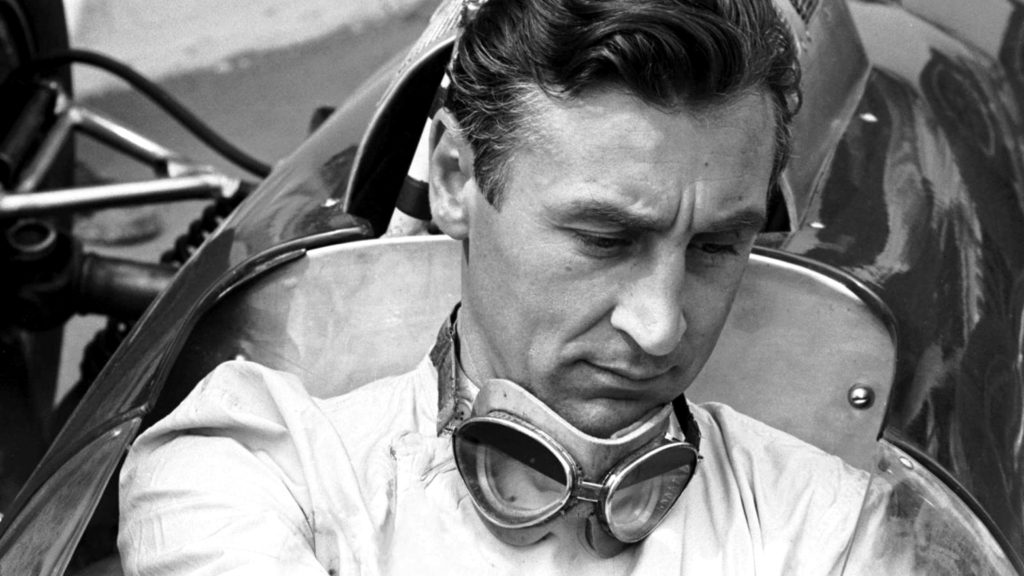
This article deal’s primarily with Salvadori’s time driving Jaguar cars, and related events, and is not meant to be an exhaustive review of his whole life and career.
Early Days
Though Roy Francesco Salvadori was born on 12 May 1922 at Dovercourt, Essex, to Italian (Gino and Zelinda) parents – amusingly his mother’s maiden name was Ferrari – he was a true Londoner at heart. Gino Salvadori was, as Roy called him, “…a-jack-of-all-trades, sometimes he was successful and sometimes not. We had a large house with spacious grounds in Dovercourt, near Harwich, where he conducted his various business ventures. Probably his most successful was the manufacture of ice-cream. He worked all day and all week-end, sometimes at night, making the ice-cream and he distributed his ice-cream throughout South-East England. Rather amusingly, he adapted an already famous Wall’s slogan, ‘Stop me and buy too’. My father was always doing something new and later he had a business in London.”
Roy was educated at a convent boarding school in Brentwood and on leaving, joined his father in whatever the business happened to be at that time. The property at Dovercourt was sold and the family moved to London. Before and during the Second World War Gino Salvadori was in the business of manufacturing alabaster and plaster models, which in Roy’s words was, “…my father’s last and most successful business venture.”
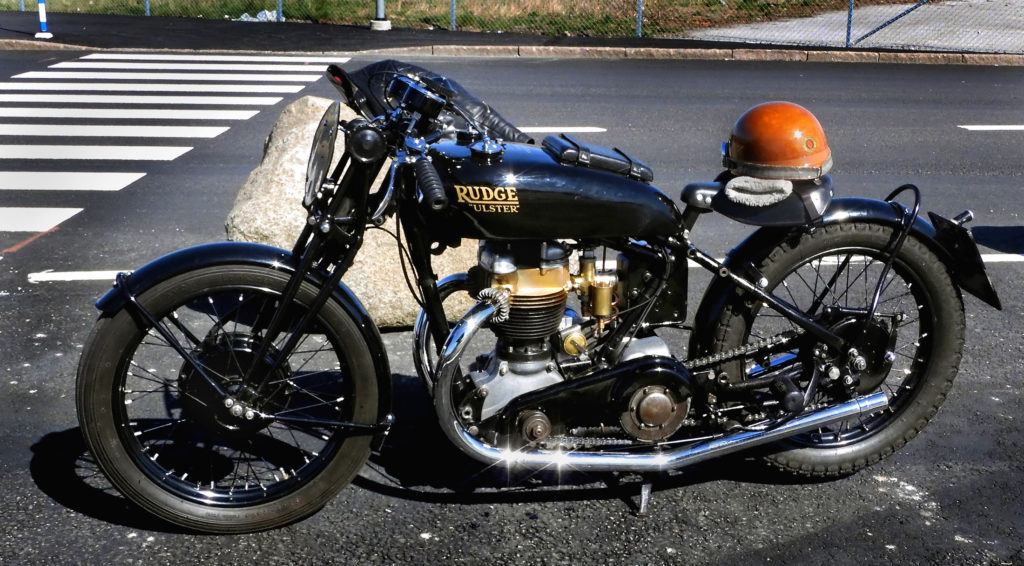
As a teenager Roy bought a Rudge TT Ulster motor-cycle but when it was being repaired he borrowed a friend’s BMW transverse twin in 1940 to visit a girlfriend in Hatfield.
On the way back, with only the very dim wartime headlamp to guide him, he encountered a pill box that had been erected at a fork in the road.
Salvadori thought he was going to hit it and “…slammed the bike down on its side, one of the cylinder heads dug into the road, the bike rebounded off the road and pinned me to the concrete side of the pill box.”
The result was a broken femur and a long stay in hospital; the doctors tried to set the bone but it would not knit together and a stainless steel plate was fitted. It took nearly a year before Salvadori could walk properly and the leg gave him trouble throughout his life. As a result of the accident he was classed Grade Four at his medical and missed military service.
He had to earn a living and started his own business manufacturing alabaster and plaster models. The motor-cycle accident did not put him off the lure of speed and he wanted to take to the track but with a car. He got the chance to race and began his career in 1946, racing purely for the pleasure of it.
Amateur Racing
Taking part in minor events, first in an MG and later in an offset Riley racer, he was then given the opportunity to drive an ex-Tazio Nuvolari 1935 German GP-winning Alfa Romeo P3 and Prince Bira’s Maserati 4CL.
In 1947 Salvadori bought a car hire business in Leytonstone which specialised in the supply of limousines for weddings and funerals. The cars were old and unreliable, so after some complaints from clients Salvadori sold the business and the stock. This left the Leytonstone premises empty so he set up second-hand car sales in seven-seater limousines, something he knew about. As the business grew he formed a business partnership with William Mansfield and moved to Fitzroy Street in London, just off Warren Street which was the centre for second-hand car dealers.
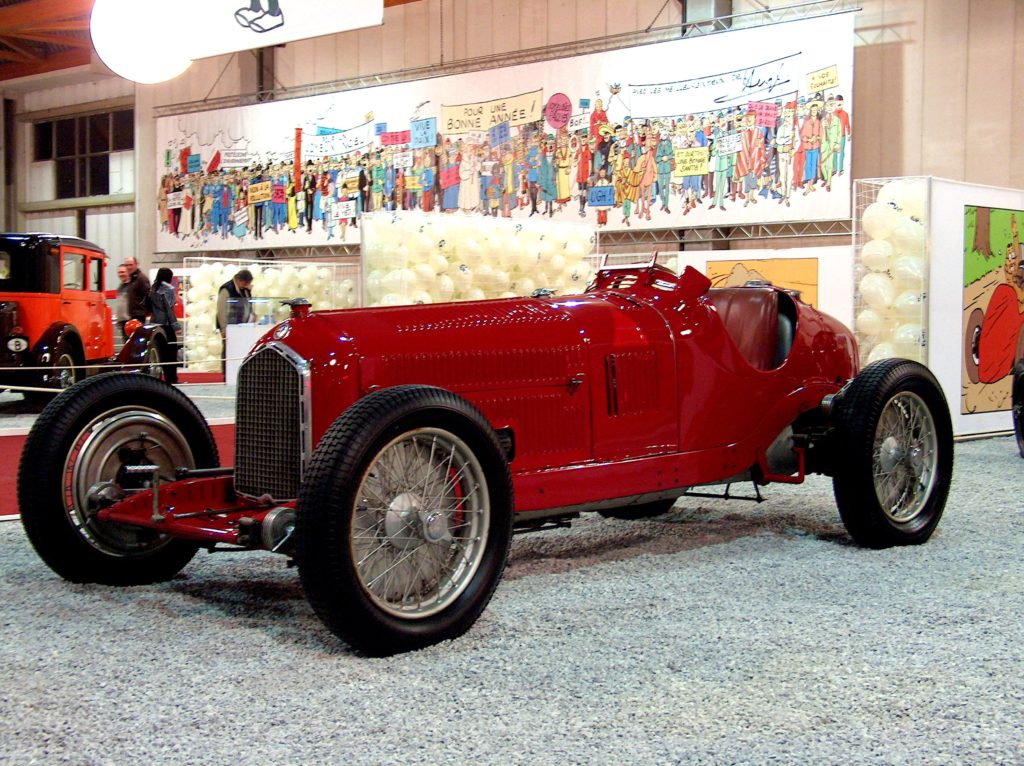
Salvadori now concentrated on buying and selling more sporty models rather than large stately cars but there was still time for racing and he drove the Alfa Romeo P3 in the 1947 Grand Prix des Frontières, at Chimay, Belgium but experienced some difficulty when the car stuck in its highest gear. Nevertheless, he held firm and finished in 5th place and this brought offers to drive a wide variety of British cars including a Healey and a Frazer-Nash Le Mans Replica.There was still time for racing and he drove the Alfa Romeo P3 in the 1947 Grand Prix des Frontières, at Chimay, Belgium but experienced some difficulty when the car stuck in its highest gear. Nevertheless, he held firm and finished in 5th place and this brought offers to drive a wide variety of British cars including a Healey and a Frazer-Nash Le Mans Replica.
His career nearly ended in May 1951, when driving the Frazer-Nash in the Daily Express meeting at Silverstone, he had a near-fatal crash after hitting a marker drum. He suffered a fractured skull and broken bones after being ejected from the somersaulting car and was given the last rites. In spite of a lengthy hospital stay, Salvadori was keen to get back into the fray and the lack of a viable car prompted him to switch from the damaged Frazer-Nash and acquire an early steel-bodied Jaguar XK120 (HBC 226). By August that year he was back on the track with the XK120 at Boreham where he scored two podium finishes in the wet, coming 3rd in the National Unlimited race and 3rd in the William Lyons Trophy race behind Duncan Hamilton in LXF 731 and Jim Swift in OVT 325. Subsequently Salvadori bettered these results with 2nd places at Castle Combe and again at Silverstone in May of 1952. He returned to Boreham a month later and achieved yet more success, finishing 2nd in the National Unlimited, William Lyons Trophy and Handicap races. The success with the Jaguar XK120 convinced Salvadori to become a professional racing driver. He also opened a garage-showroom, Elmbridge Motors, on the Kingston by-pass; it was a success and, though there was only space for 24 cars, he obtained a total of twelve agencies which included Jaguar, Aston Martin, MG and Wolseley.
Professional Racing
Salvadori’s first professional drive was for Belfast motor racing enthusiast, Bobby Baird in his 2.7-litre Ferrari 225 at the first Goodwood Nine Hour race in 1952. He faired well but was delayed by a faulty tail lamp; in the event he brought the Ferrari home in 3rd place. That same year Salvadori made his debut at the Silverstone Grand Prix driving a privately-entered (Capara) Formula Two Ferrari 2-litre Tipo 500. He finished in 8th place, three laps behind the winner, World Champion Alberto Ascari who was driving a works-entered Ferrari. The following year Salvadori drove a works 2-litre Connaught-Le Francis A Type 4 in five European Grands Prix but the car was plagued with mechanical problems and he failed to finish some of the races, though he took first place to win the Madgwick Cup.
His Formula One season may have been disappointing but he excelled in Formula Two and in long-distance sports car events. In August 1953 Salvadori gained 2nd place at the notorious Nürburgring in the taxing 1,000 kilometres race; he shared the driving with Ian Stewart in an Ecurie Ecosse Jaguar C-type (XKC 041).
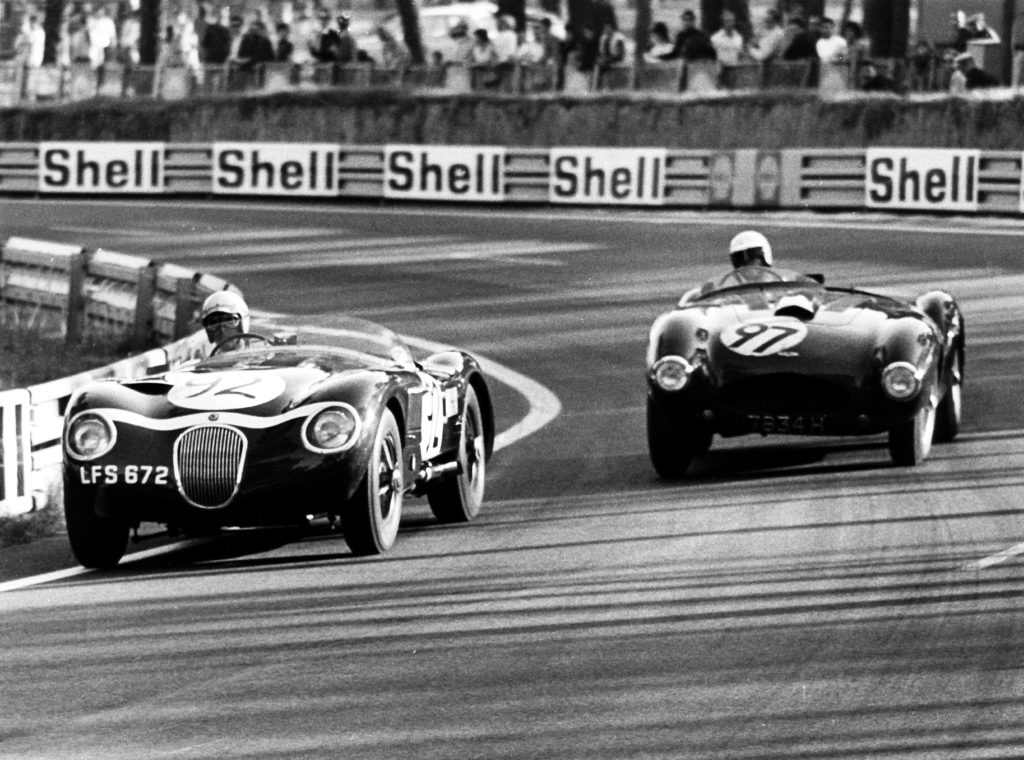
For the next three years Salvadori’s Grand Prix ambitions were almost non-existent, due to the problems with the cars he was given to drive.
Sid Greene’s Gilby Engineering team entered a British Racing Green Maserati 250F into several Grands Prix and non-championship Formula One races. It was unreliable, but skilful driving gave him first place in the Curtis Trophy and 3rd place in the 1954 Richmond Trophy Race at Goodwood.
He fared better with the Ecurie Ecosse C-type (XKC 052) on 5 June at the Snetterton WECC (West Essex Car Club) meeting driving in three races, coming first twice and finishing 3rd in the William Lyons Trophy Race. He also drove Sid Greene’s Maserati A6GCS to victory in the under 2-litre class sports car races at Goodwood and Aintree that year.
The 1955 season brought more success for Salvadori and in the, now improved, Gilby-Maserati 250F he won several races at Snetterton, Goodwood and Silverstone. It was at the last-named that he drove a works-entered Aston Martin DB3S to take 2nd place at the Silverstone International. Not neglected were his Grand Prix entries and after a troubled start with the BRM and Vanwall teams in 1957 he went on to join the smaller Cooper Formula One team run by father and son Charles and John. He scored his first World Championship points with a 5th place in the British Grand Prix at Aintree and won several non-championship races including the Woodcote Cup at Goodwood, all in the rear-engined Cooper T43-Climax.
Aston Martin and Jaguar
By now Salvadori’s name was among the top with Stirling Moss and Mike Hawthorn, the latter about to announce his retirement from motor racing. He continued to drive for Cooper in 1958, now in the improved T45, and completed seven Grands Prix, scoring points in five of them.
He also joined the David Brown Aston Martin team that was beginning to challenge Ferrari’s dominance in sports car racing. Sharing the driving with fellow Cooper team-mate Jack Brabham in the 3-litre Aston Martin DBR1, Salvadori took 2nd place in the Tourist Trophy race at Goodwood.
He had to choose between Cooper and Aston Martin; winning more Championship points with Cooper but at the end of the season he left for Aston Martin. Salvadori now concentrated his efforts with Aston Martin’s bid to win the World Sports Car Championship. After failing to finish the Le Mans 24 hour race in each of 1953, 1954, 1955, 1956, 1957 and 1958, finally in 1959, driving with Carroll Shelby, he was to win Le Mans driving Aston Martin’s DBR1/300.
David Brown, owner of Aston Martin, was delighted to win the World Sports Car Championship and set his sights on Grand Prix racing. Salvadori was not convinced by this move but he did his best with the new Aston Martin DBR4/250 and managed two sixth place Grand Prix finishes during 1959.
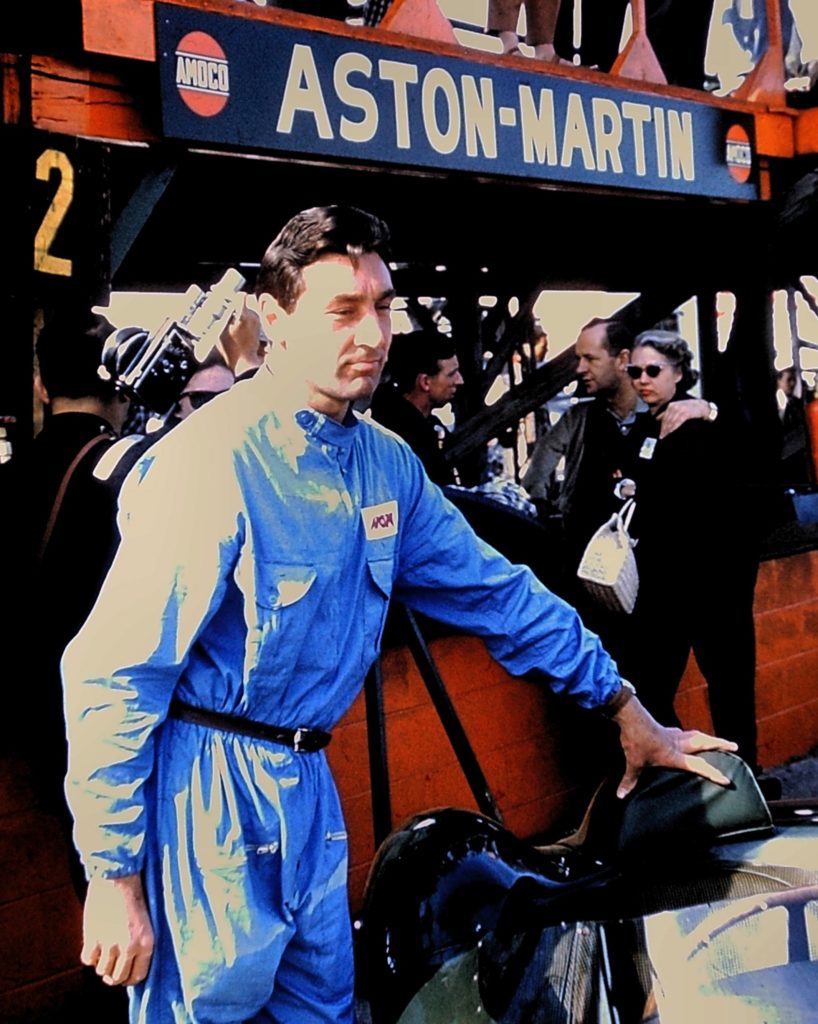
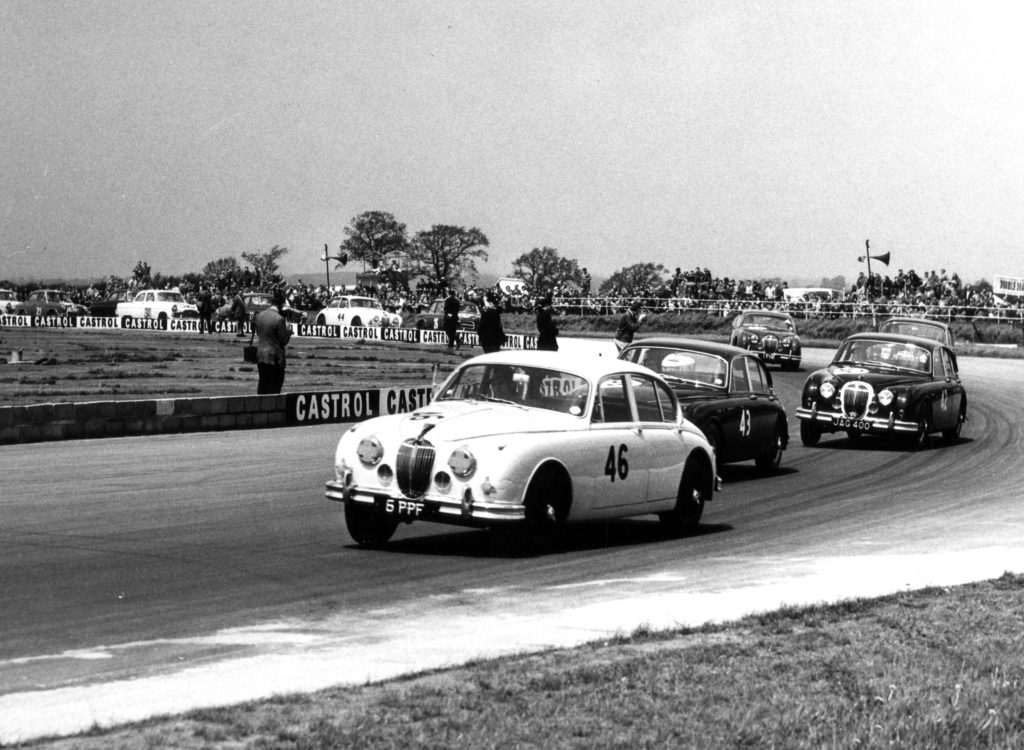
Salvadori did not drive Aston Martins exclusively, he still championed the Cooper cars and also raced for John Coombs in a modified Jaguar 3.8-litre Mark II; with the latter he took 2nd place in the Fordwater Trophy for Saloon Cars. However, 1960 was not the best year for him, though he had several wins with the Cooper-Maserati Monaco T49 and Cooper-Climax T51. There were problems with the DBR4/250 and he posted two retirements but with a privately-entered ex-works DBR1/300 from Border Reivers he shared the driving with Jim Clark and took 3rd place.
The following year he was invited to join the Yeoman Credit Racing team to drive one of the Cooper T53s in the new 1.5-litre Formula One series; his team mate was reigning Motor Cycle World Champion John Surtees now racing in Formula One. With Yeoman Credit he won the London Trophy; the Longford Trophy (Ecurie Vitesse Cooper T51) and the Lombard Trophy with the new Aston Martin DB4 GT Zagato entered by John Ogier. These were highlights but his other race results were limited to 2nd and 3rd places.
At Crystal Palace on 21 May 1961, Salvadori showed his ability to drive any type of racing car to its advantage. He drove the new Jaguar E-Type (Chassis S850006 – Registered BUY 1), entered by John Coombs to win the Norbury Trophy and set the GT-Class record; the Green Helmet Trophy race in a Cooper-Maserati Monaco T49 and the fastest lap to win in a Formula One Cooper-Climax and 5th place in a John Coombs Jaguar 3.8-litre Mark II. Not bad for a day’s work.
Salvadori had championed BUY 1 for Coombs during 1961 and won the Peco, British Empire, Scott-Brown and Molyslip Trophies at various venues and races. Bowmaker replaced Yeoman Credit for 1962 and the new Lola Climax took over from the Cooper Climaxes with Salvadori and Surtees retained as drivers. However, three 2nd places in non-championship races at Goodwood, Crystal Palace and Karlskoga, weren’t enough to convince him to continue in Formula One; his last Grand Prix at East London in South Africa ended with his 6th retirement of the season.
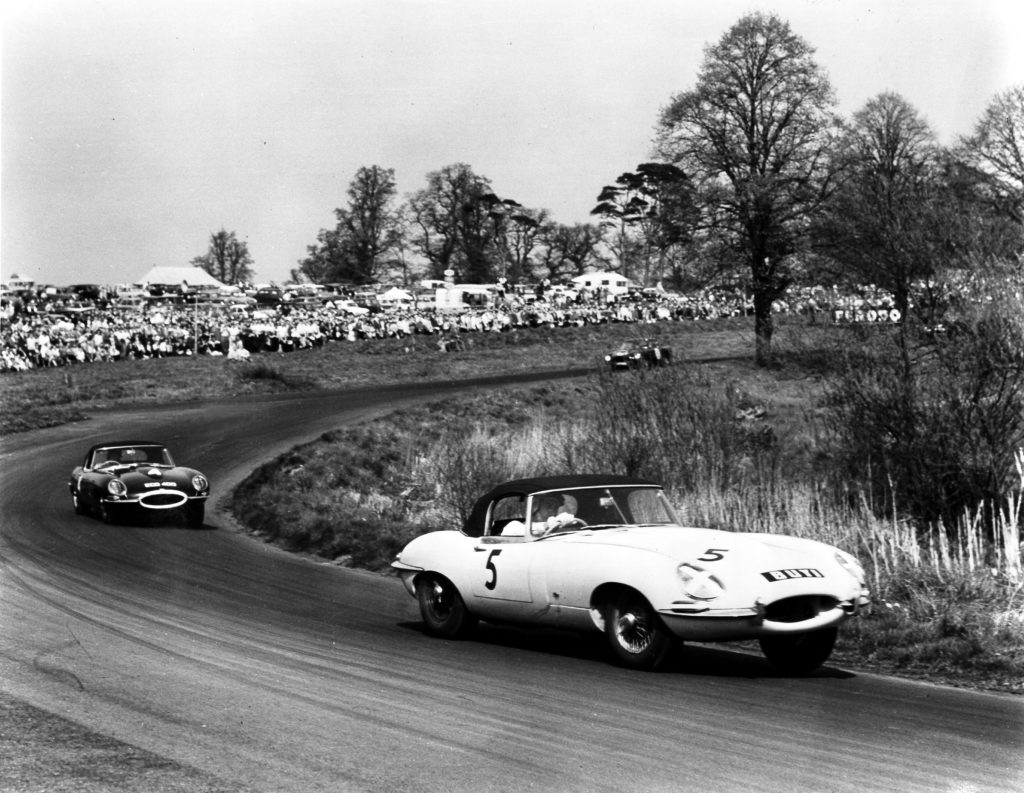
Lightweight E-type 850006
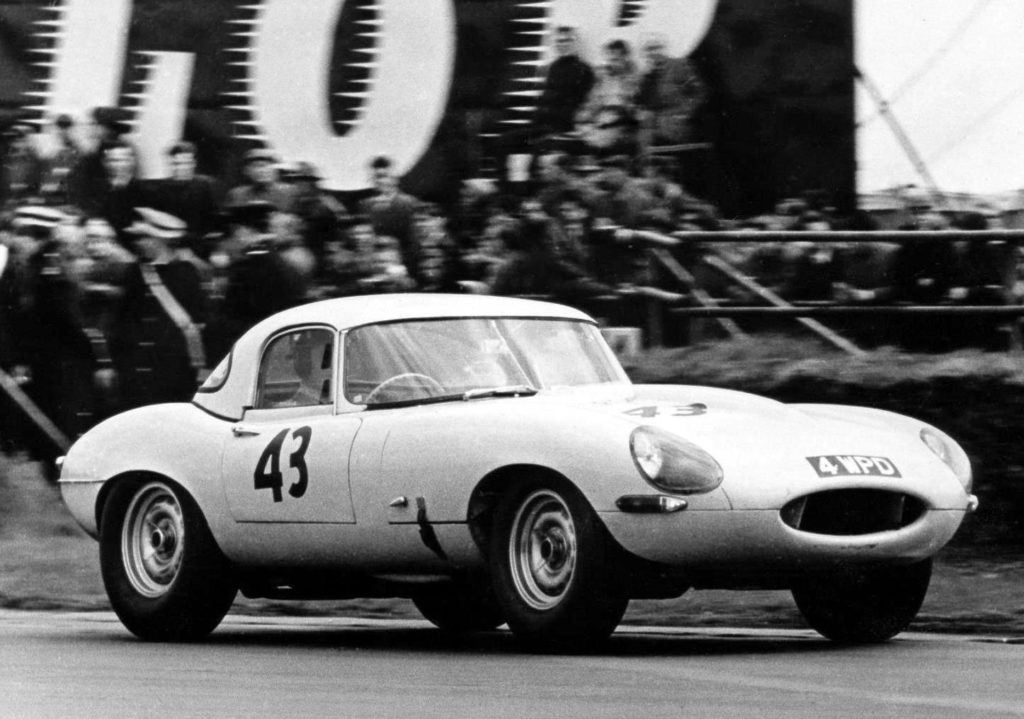
Meanwhile, Jaguar had modified S850006 from a fairly-standard E-Type by replacing many of the steel panels with lighter aluminium; the engine was also modified. During 1962-63 Jaguar further modified the car to become the prototype for what became known as the Lightweight E-Type – although Jaguar Cars never referred to this model, the first of twelve examples, as ‘Lightweight E-Type’ and it never appeared in price lists or advertisements.
Over the next few years Salvadori would drive the Coombs Mark II and E-Type, describing the latter as, “One of the most comfortable racing cars I have ever driven.” He was to drive one of the three E-Types entered by Briggs Cunningham for the 1963 Le Mans and qualified the fastest. Some six hours into the race, he encountered several cars spinning on a pool of oil near the end of the Mulsanne Straight. There was nowhere for him to go, his Jaguar slid on the oil, hit a bank at over 100 mph and burst into flames.
He was able to drag himself out of the shattered E-Type and scramble to safety while the fire was extinguished. He was badly bruised but suffered no broken bones, he considered it “the worst shunt I ever had” but was back racing a month later to win the International Six-Hour Saloon Car Race at a rain-soaked Brands Hatch driving a Tommy Atkins entered Coombs Jaguar 3.8-litre Mark II.
He made his last appearance for Aston Martin that year, this time in the DB4 at the Coppa Inter-Europa at Monza. The DB4 was not as powerful as the eight Ferrari GTOs competing but after a hard-fought race he crossed the finish line not only to win the race but also to be awarded the BRDC trophy for the best performance by a British driver racing abroad during the year.
For 1964 Salvadori continued his racing, coming first to win the Whitsun Trophy with Tommy Atkins’ Cooper-Maserati and 2nd at the Coppa Inter-Europa driving a Ferrari 250LM for Maranello Concessionaires.
Race Results – Jaguar Related
| Year | Date | Race | Result | Car / Co-Driver | Entrant / Team (If not himself) |
| 1947 | 25 May | Chimay, Belgium Grand Prix de Frontierès Formula Libre |
5th | Alfa Romeo P3 | |
| 1951 | 11 August | West Essex Car Club (WECC) Boreham Jaguar XK120 |
3rd |
Jaguar XK120 (HBC 226) |
|
| 11 August | WECC Boreham Unlimited |
3rd | Jaguar XK120 | ||
| 8 September | Curragh, Ireland Wakefield Trophy Formula Libre |
DNS | Jaguar XK120 | ||
| 1952 | 3 May | Castle Combe National Formula Libre |
3rd | Jaguar XK120 | |
| 3 May | Castle Combe Unlimited |
2nd | Jaguar XK120 | ||
| 24 May | Silverstone Maidstone &Mid-Kent Motor Club (MMKMC) Over 2.5 litre |
2nd | Jaguar XK120 | ||
| 21 June | WECC Boreham Jaguar XK120 |
2nd | Jaguar XK120 | ||
| 21 June | WECC Boreham Handicap 1.5 Litre |
2nd | Jaguar XK120 | ||
| 21 June | WECC Boreham Scratch Unlimited |
2nd | Jaguar XK120 | ||
| 26 July | Goodwood BARC Handicap |
1st |
Jaguar XK120 | ||
| 26 July | Goodwood BARC Over 3 litre |
4th | Jaguar XK120 | ||
| 1953 | 30 August | Nürburgring, Germany 1,000 kms |
2nd | C-type XKC041 KSF 181 with Ian Stewart |
Ecurie Ecosse |
| 13-14 June | Le Mans, France 24 Hours Salvadori’s first Le Mans |
2nd | Aston Martin DB3S with George Abecassis | Aston Martin Ltd | |
| 1954 | 5 June | WECC Snetterton Unlimited |
1st | Jaguar C-type XKC052 | Ecurie Ecosse |
| 5 June | WECC Snetterton Handicap over 1.5 litre |
1st | Jaguar C-type XKC052 | Ecurie Ecosse | |
| 5 June | WECC Snetterton Jaguars William Lyons Trophy |
3rd | Jaguar C-type XKC052 | Ecurie Ecosse | |
| 4 September | Charterhall, Berwickshire Winfield Joint Committee (WJC) Sports |
1st | Jaguar C-type XKC052 | Ecurie Ecosse | |
| 29 September | Goodwood International Sports Unlimited |
1st | Jaguar C-type XKC052 | Ecurie Ecosse | |
| 23 October | Penya-Rhin – Barcelona GP |
2nd | Jaguar C-type | Ecurie Ecosse | |
| 1959 | 2 May | Silverstone International, GP |
2nd | Jaguar Mark I | John Coombs |
| 20-21 June | Le Mans 24 Hours Salvadori Wins Le Mans |
1st | Aston Martin DBR1/300 with Carroll Shelby |
David Brown Racing | |
| 26 September | Oulton Park International |
6th |
Jaguar Mark I | John Coombs | |
| 1960 | 18 April | Goodwood Fordwater Trophy |
2nd | Jaguar Mark II | John Coombs |
| 1961 | 3 April | Goodwood Fordwater Trophy |
DNA | Jaguar E-type | John Coombs |
| 15 April | Oulton Park National Open GT |
3rd | Jaguar E-type | John Coombs | |
| 21 May | Crystal Palace National Open GT Norbury Trophy |
1st | Jaguar E-type | John Coombs | |
| 21 May | Crystal Palace Saloon Cars |
5th | Jaguar Mark II | John Coombs | |
| 3 June | Brands Hatch Peco Trophy |
2nd | Jaguar E-type | John Coombs | |
| 8 July | Silverstone British Empire Trophy |
5th | Jaguar E-type | John Coombs | |
| 23 July | Snetterton Scott-Brown Memorial |
2nd |
Jaguar E-type | John Coombs | |
| 7 August | Brands Hatch Peco Trophy |
3rd | Jaguar E-type | John Coombs | |
| 30 September | Snetterton Molyslip Trophy |
2nd | Jaguar E-type | ||
| 1962 | 7 April | Oulton Park National Open GT |
7th | Jaguar Mark II | John Coombs |
| 23 April | Goodwood Sussex trophy |
DNF | Jaguar E-type | John Coombs | |
| 12 May | Silverstone International GT |
5th | Jaguar E-type | John Coombs | |
| 24 June | Le Mans 24 Hours |
4th | Jaguar E-type with Briggs Cunningham |
Briggs Cunningham | |
| 6 August | Brands Hatch Peco Trophy |
5th | Jaguar E-type | John Coombs | |
| 18 August | Goodwood Tourist Trophy |
4th | Jaguar E-type | John Coombs | |
| 1963 | 15 April | Goodwood Sussex Trophy |
3rd | Jaguar E-type | C T (Tommy) Atkins |
| 11 May | Silverstone International GT |
2nd | Jaguar E-type | C T Atkins | |
| 16 June | Le Mans 24 Hours |
DNF | Jaguar E-type with Briggs Cunningham |
Briggs Cunningham | |
| 6 July | Brands Hatch 6 Hours |
1st | Jaguar Mark II with Denny Hulme |
C T Atkins | |
| 13 July | Mallory Park Grovewood Trophy |
3rd | Jaguar E-type | C T Atkins | |
| 24 August | Goodwood Tourist Trophy |
3rd | Jaguar E-type | C T Atkins | |
| 1964 | 30 March | Goodwood Sussex Trophy |
DNA | Jaguar E-type | John Coombs |
| 2 May | Silverstone International GT |
5th | Jaguar E-type | C T Atkins | |
| 1965 | 7 June | Goodwood Whitsun Salvadori’s last race |
2nd | Ford GT40 | F English of Bournemouth |
Retirement from Racing
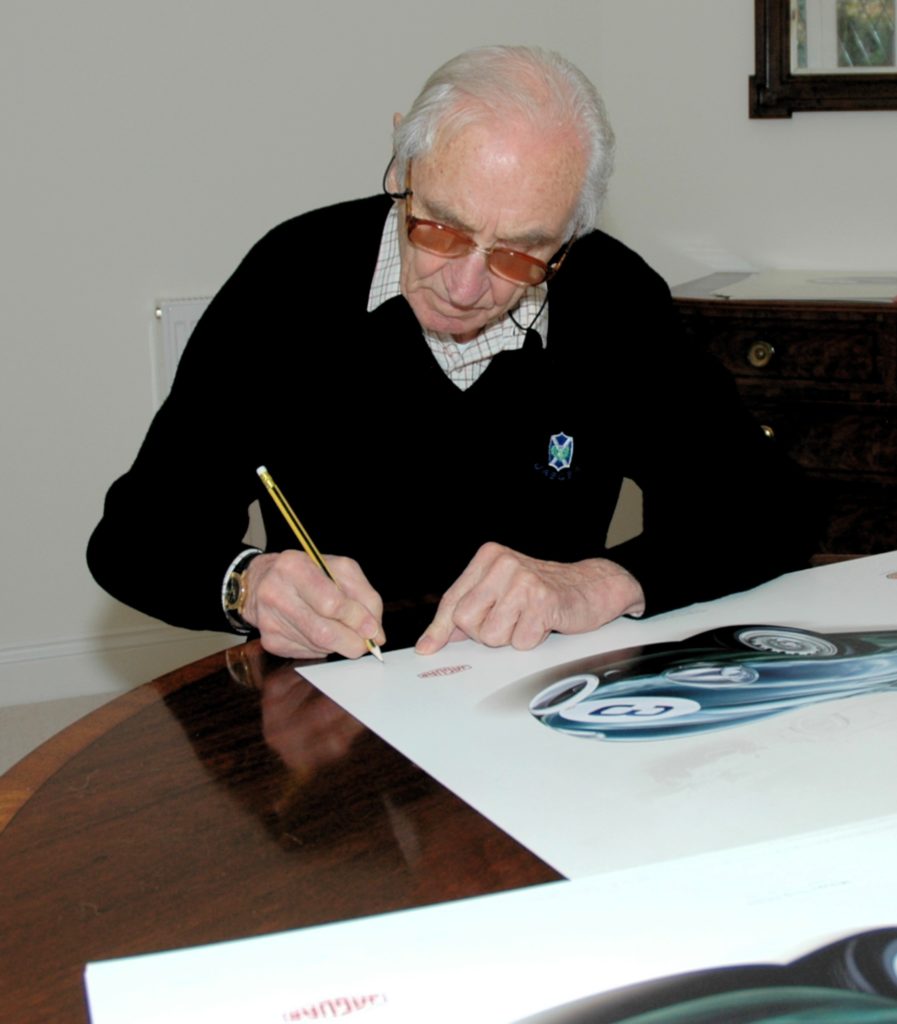
Early in 1965, after coming 2nd in the Whitsun Trophy race driving a Ford GT40, Salvadori announced his retirement from competition driving. He then brokered the Chipstead Motor Group’s purchase of Cooper and saw the team through the 1966-67 season with their new 3-litre F1, as manager.
The years that followed saw him work as a director of Elmbridge Motors, before selling it to the Chipstead Group, and also keep his interest in motor-racing.
He took part in various racing celebrity events from Silverstone to Macau and in 2003 joined his old friend Sir Jack Brabham in the Irish Jig JNF Car Rally for which Jaguar loaned him one of their new XKR Convertibles. Salvadori and his wife Sue retired to Monaco where their lovely flat overlooked the start/finish line at Monte Carlo.
They also had a house in Sussex where they decamped during some of the summer months to attend functions hosted by the BRDC and also the Goodwood Revival.
At the Goodwood Revival in 2007 his life and career were celebrated and he was driven around the circuit, to cheering crowds, by Sir Stirling Moss in an Aston Martin DBR1. Ever a modest man Roy could not understand why he was given such an accolade and why the packed grounds were pleased to see him. The late Sir Stirling told the author that, “Roy was bewildered and turned to me and said ‘Who are they cheering’ and I said ‘You, you clot!’ He replied, ‘I can’t think why they should’. Roy was a brilliant driver and a damned fine chap. I miss him.”
Sadly, his last years were plagued with Alzheimer’s which robbed him of his joy at going out and slowly sapped his memory but he remained good company and with his devoted wife by his side was able to fight the advancing problem. Roy Salvadori died aged ninety on 3 June 2012 but his legacy as one of the great drivers endures.
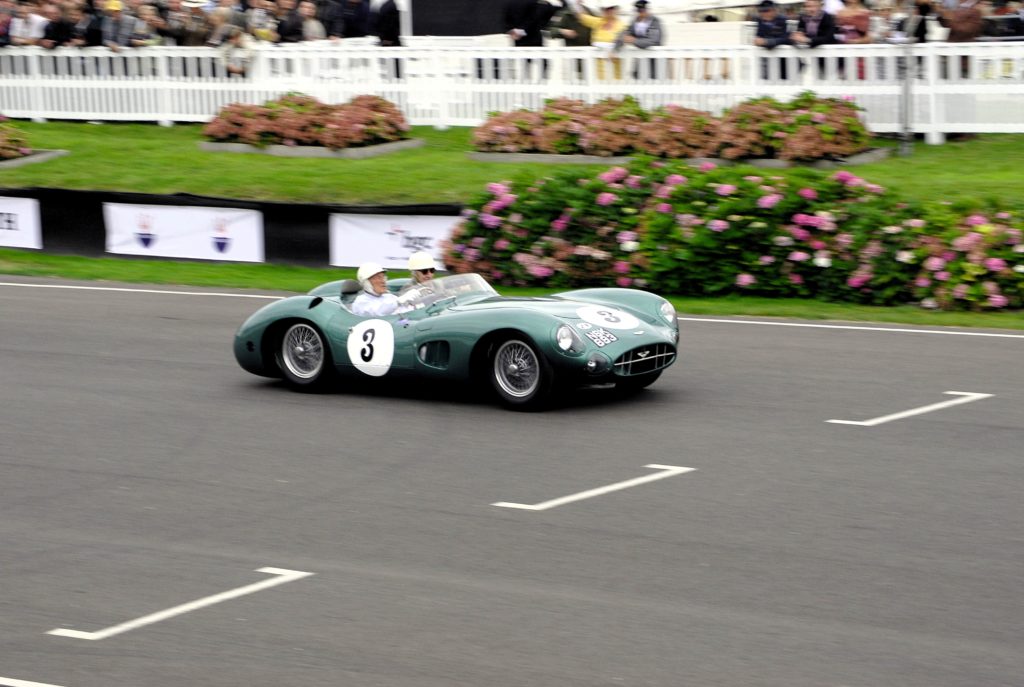
Author: François Prins with additional information from Tony Merrygold.
Race results from www.RacingSportsCars.com
© Text and Images – JDHT, Roy Salvadori Collection (RSC), François Prins (FP) and others.
Sources and Further Reading:
Parker, Chas and Porter, Philip, Jaguar C-Type: The Autobiography of XKC 051 (Porter Press International Ltd, 2017)
Porter, Philip and Page, James, Jaguar Lightweight E-Type: The Autobiography of 49 FXN (Porter Press International, 2017)
Roe, Geoff, Bert Hadley A Son of Birmingham: A Tribute (The Pre-War Austin Seven Club Ltd, 2013)
Lord Montagu of Beaulieu and foreword by HRH Prince Michael of Kent, Jaguar (Quiller Press, 1997)
Mennem, Patrick, Jaguar: An Illustrated History (The Crowood Press Ltd, 1991)
Parker, Chas, Jaguar D-Type: Owners’ Workshop Manual – 1954 Onwards (All Models) (Haynes Publishing, 2017)
Whyte, Andrew, Jaguar: The Definitive History of a Great British Car (Patrick Stephens Limited, 1990)
Porter, Philip, Jaguar: E-Type The Definitive History (Porter Press International, 2015)
Thorley, Nigel, Jaguar in Coventry: Building the Legend (Breedon Books Publishing Co Ltd, 2013)
Porter, Philip, Jaguar: Sports Racing Cars (Bay View Books, 1995)
Clausager, Anders Ditlev, Le Mans (Littlehampton Book Services Ltd, 1982)
Skilleter, Paul, Norman Dewis of Jaguar: Developing the Legend (PJ Publishing Ltd, 2017)
Porter, Philip and Skilleter, Paul, Sir William Lyons: The Official Biography (Haynes Publishing, 2001)